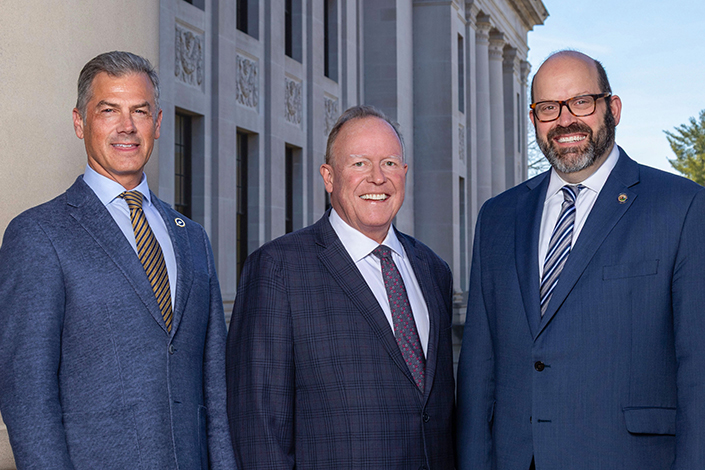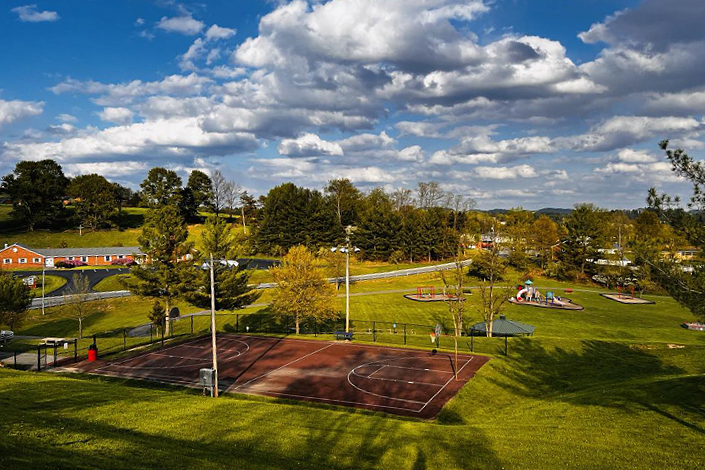By Megan Bevins

Much of West Virginia’s charm lies in its rural communities, where thousands of hardworking and dedicated citizens reside. Despite this, many of those areas are struggling with economic hardships and limited access to essential resources.
Glenville State University (GSU), the West Virginia Community Development Hub (WVCDH) and the U.S. Department of Agriculture (USDA) Rural Development have all joined together to support these communities and foster growth through the Rural Partners Network (RPN).
The RPN was launched by the USDA in 2022 and consists of two community networks within West Virginia: Southern West Virginia Community Network, hosted by the WVCDH, and the West Virginia Pioneer Community Network, hosted by GSU. These networks are supported by USDA Rural Development local staff.
Southern West Virginia currently serves 12 counties, while the Pioneer Network serves eight.
Kayleigh Kye, the RPN supervisory community liaison for USDA Rural Development, says the process of identifying those counties included compiling a list of potential participants from areas designated as socially vulnerable and distressed. The USDA then analyzed each county using data reflecting its unique challenges and solicited feedback from stakeholders familiar with each of those counties.
“This step was intended to provide Rural Development with on-the-ground insights pertaining to each prospective community’s institutional and organizational capacity and overall commitment to community economic development,” Kye says.
Since the RPN began operating, rural communities have been uplifted, and many have overcome persistent challenges. For example, Kye says some municipalities have been able to complete audits that were 12 years overdue in just 12 months.
“The benefits of being part of a rural partners network for 20 small, economically disadvantaged counties in West Virginia are manifold, especially in areas where resources are often scarce and challenges are many,” David Hutchison, vice president of advancement and government affairs for GSU and executive director of the GSU Foundation, says.
The RPN also gives community members an opportunity to work together and drive more opportunity and investment to their areas.
“At RPN meetings, partners often exchange knowledge and best practices, learn from each other’s successes and failures and implement proven strategies for community development,” Hutchison says. “Social ties are strengthened as communities collaborate, leading to a richer cultural exchange and stronger regional identity. By banding together, these 20 counties can leverage their collective voice and resources to address systemic issues, improve the quality of life for their residents and create a more vibrant future for rural West Virginia.”
While many of the nation’s RPN community networks cover only a small percentage of territories, the two networks in West Virginia encompass nearly half of its counties. This highlights the importance of giving attention not only to vast rural areas but also to smaller communities, a focus of both community networks.
Kye says they do this by using an engagement system that allows them to identify local needs and challenges by working with individual communities and interacting with them in person.
“We coordinate partner meetings twice a year to discuss potential regional projects, the work that’s already being done throughout these regions to address the priority areas and how the RPN team can further assist communities,” Kye says. “We use this time to gather feedback from members, and these conversations inform how we approach our work moving forward.”
Using this strategy, maternal health care access was identified as a need in the Southern West Virginia Community Network. This allowed the network to team up with the Texas A&M University Rural and Community Health Institute to identify those local needs and come up with a plan to address them. That plan consists of phases guiding stakeholders to implement new options for maternal health care across Southern West Virginia.
In its first year in West Virginia, the RPN has made significant strides in creating positive change within rural communities. Initially, its focus was on community engagement over monetary gain; however, the RPN’s efforts across the 20 counties have resulted in nearly half of the engagements leading to new connections and partnerships. The RPN has made many notable achievements, such as securing a $50,000 grant for A Place to Grow Children’s Center in Fayette County and the recent formation of a statewide steering committee.
As far as future growth goes, both community networks hope to keep expanding their positive impact on rural communities.
Hutchison says the rural communities included in the RPN are helping spearhead prosperity through stimulating the local economies and increasing their wealth.
“Investing in workforce development ensures that residents have the skills required for these new opportunities, fostering a capable and adaptable labor force,” he says.
Stephanie Tyree, executive director for the WVCDH, mentions plans to collaborate with the USDA and increase the positive impact of the RPN on the 12 Southern West Virginia counties even further. She hopes this collaboration will drive community economic development.
“Our hope is that through this collaboration, and through the shared work between the Southern West Virginia Rural Partners Network and the Pioneer Network, new collaborative projects, opportunities and funding will be established that can drive forward community economic development for a large portion of West Virginia.”








